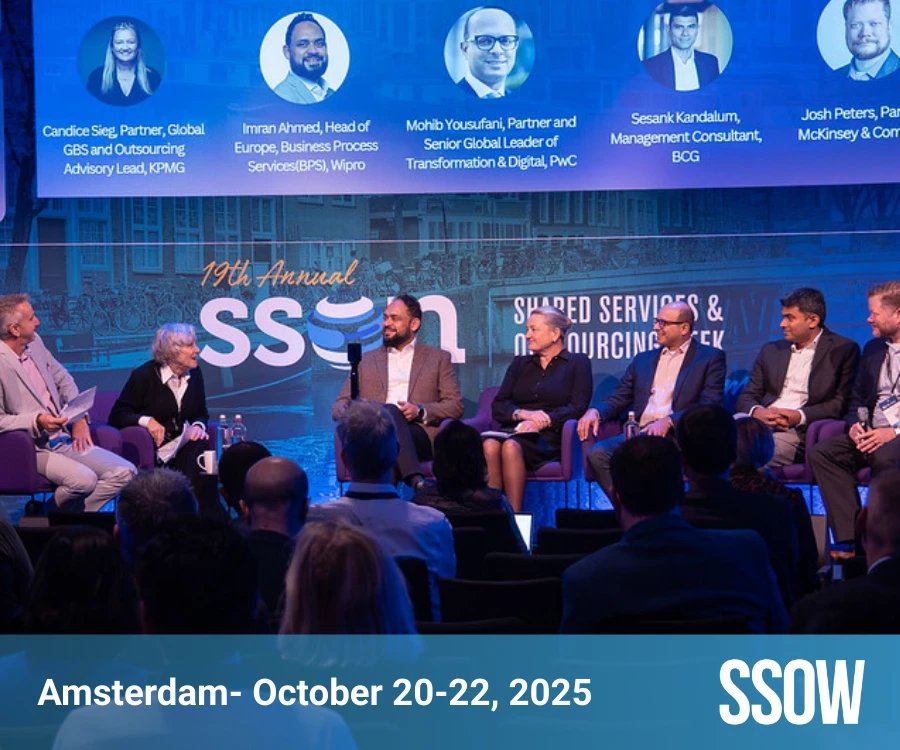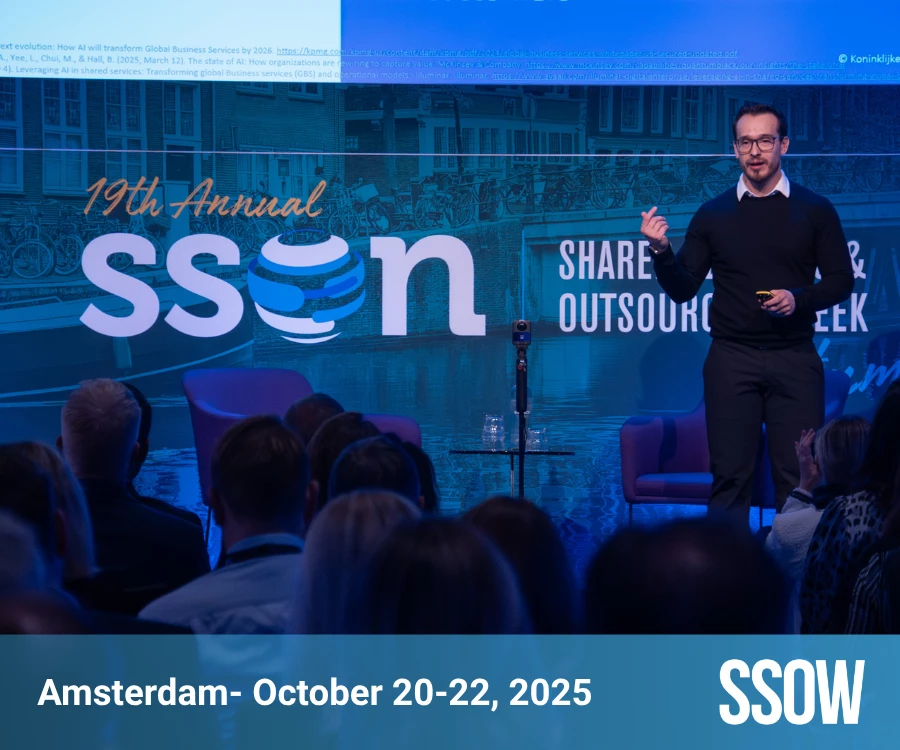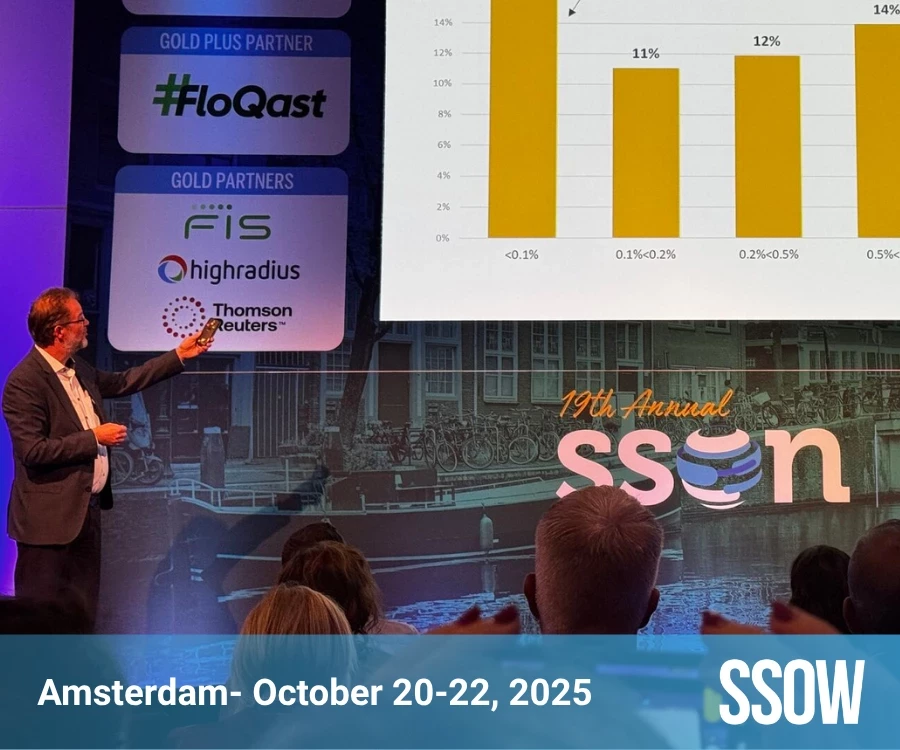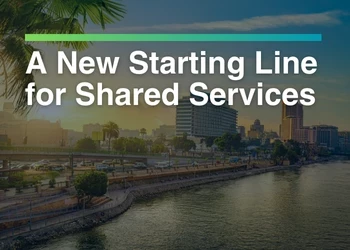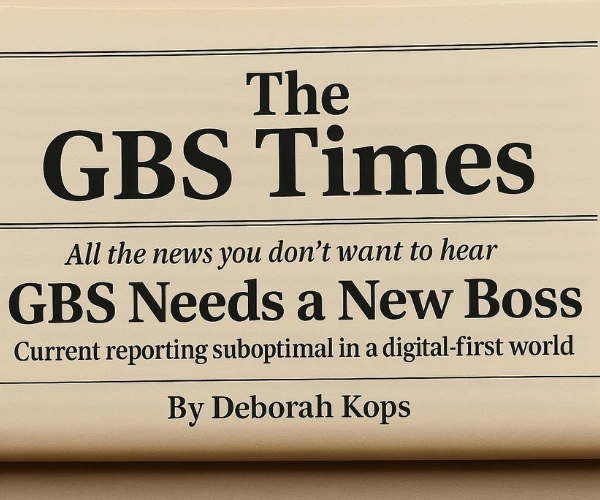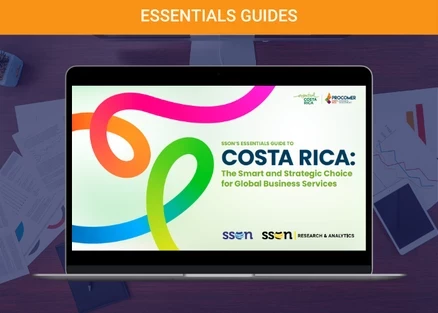
This week Shared Services and Outsourcing Week Europe 2025 kicked off in the Estoril Convention Centre, Lisbon Portugal. The opening day featured an inspiring keynote from Michele Rochefort, CEO of AXA Global Business Services (GBS), exploring the pivotal role of GBS in enterprise transformation and how AXA is evolving beyond traditional models to unlock unprecedented value through global capability centers.
From GBS to Global Capability Centers (GCCs):
With over 12,500 full-time employees in its GBS operations, AXA is at the forefront of redefining what GBS can be. At the core of AXA’s strategy is a shift from conventional shared services toward Global Capability Centers (GCCs); a transformation designed to embed trust, strategic agility, and innovation deeper into the enterprise.
This transformation aims to position GBS as pioneers of change: embracing new technologies, expanding functional scope, orchestrating strategic sourcing, and acting as a bedrock for business continuity.
Breaking Out of the Cost Center Mindset:
Michele emphasized that for GBS to be a true transformation engine, it must shed its image as a cost center and evolve into a value center. She outlined five key elements driving this shift:
- Competitive Mindset: GBS must invest in tools, talent, and technology to remain relevant and competitive. Relying solely on cost-cutting stifles innovation and long-term value, after all if you are always chasing cost savings you will never be able to grow.
- Industry and Strategic Alignment: Deep industry knowledge and a nuanced understanding of the enterprise’s strategic priorities create a competitive edge over traditional BPO models.
- Talent Management: Access to specialized talent is essential. GBS functions must foster deep business expertise and adaptability through robust upskilling and reskilling efforts.
- Operating Model Cannibalization: Efficiency is key. AXA targets FTE reductions by automating tasks and driving productivity gains, reengineering roles around value-added work.
- Virtuous Value Circle: A continuous improvement (CI) loop where technology, AI, and BPO partners converge to accelerate transformation and scale impact.
Ultimately, the GCC is as invested in business growth as the enterprise, accelerating transformation with cross-functional impact, speed, and scale.

Innovation + Continuous Improvement = Value:
At AXA, Innovation and CI are inseparable. Together, they drive measurable business value through enhanced efficiency, customer satisfaction, and risk mitigation.
- Innovation: Central to AXA’s approach is the integration of Intelligent Automation (IA) and AI into core processes. By merging technology with BPO services, AXA is building scalable, intelligent solutions and services.
- Continuous Improvement: CI is not passive; it’s embedded in the culture. Through incentivized automation targets and the launch of cross-functional automation squads, AXA actively seeks out optimization opportunities across the business. When roles are impacted, employees are supported through comprehensive reskilling initiatives.
As with all global business services, AXA GBS must be able to properly articulate their value. Thus, value creation at AXA is assessed across three dimensions: savings, risk mitigation and revenue impact. In practice this includes preventing claims leakage, expanding service coverage, and increasing productivity.
Generative AI in Action:
AXA GBS is already deploying Gen AI across various functions. From enhancing employee satisfaction using knowledge assistants built on Retrieval-Augmented Generation (RAG) models to automating claims processing. Claims processing automation has already led to some impressive results with 40% straight-through processing (STP) and 90% accuracy, which means the organization is realizing faster, more reliable outcomes that directly contribute to value creation.
GBS at a Crossroads:
Michele noted that GBS is now positioned at a crucial juncture: between what has worked well historically and what it must become to drive future enterprise success. Traditional models (landlord, onshore, FTE-incentivized, and cost-focused), are being replaced by GCCs that deliver full-scope services across technology, data, AI, and BPO.
The new aspiration is for:
- Full scope service offering Tech, AI, Data and BPO
- Output-based managed services
- P&L or hybrid commercial models
- Offshore-first strategy
- Incentives tied to impact, not headcount
AXA’s Four Strategic Drivers:
To enable this transformation, AXA Business Services is focusing on four strategic imperatives:
- Opening the Most Valuable Doors: Creating new avenues for impact within the enterprise
- Becoming Consistently Impactful Advisors: Trusted business partners, not just service providers
- Delivering Simple, Reliable, and Fast Solutions: Operational excellence as a standard
- Building an Exceptional Talent Engine: Developing the skills needed to thrive in a digital, data-driven world
Conclusion:
AXA’s bold vision for GBS goes far beyond efficiency. By placing innovation, strategic alignment, and talent development at the center of their model, they are turning Global Business Services into a competitive advantage. As Michele Rochefort aptly concluded, “GBS is no longer just a support function, it is becoming a central engine of enterprise transformation.”
If you are interested in hearing more about shared services and GBS trends, join our next event Shared Services & Outsourcing Week Autumn, Amsterdam.



